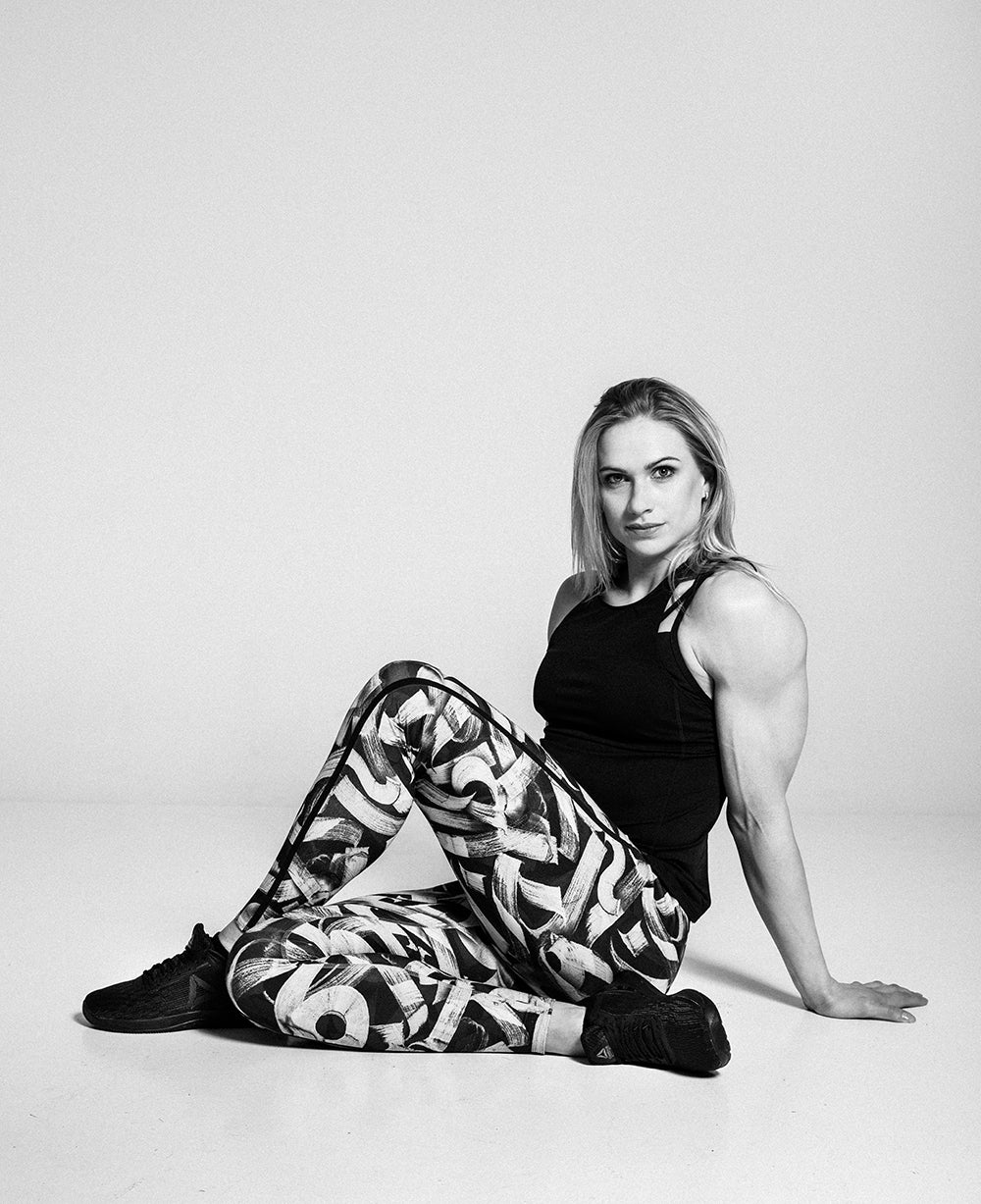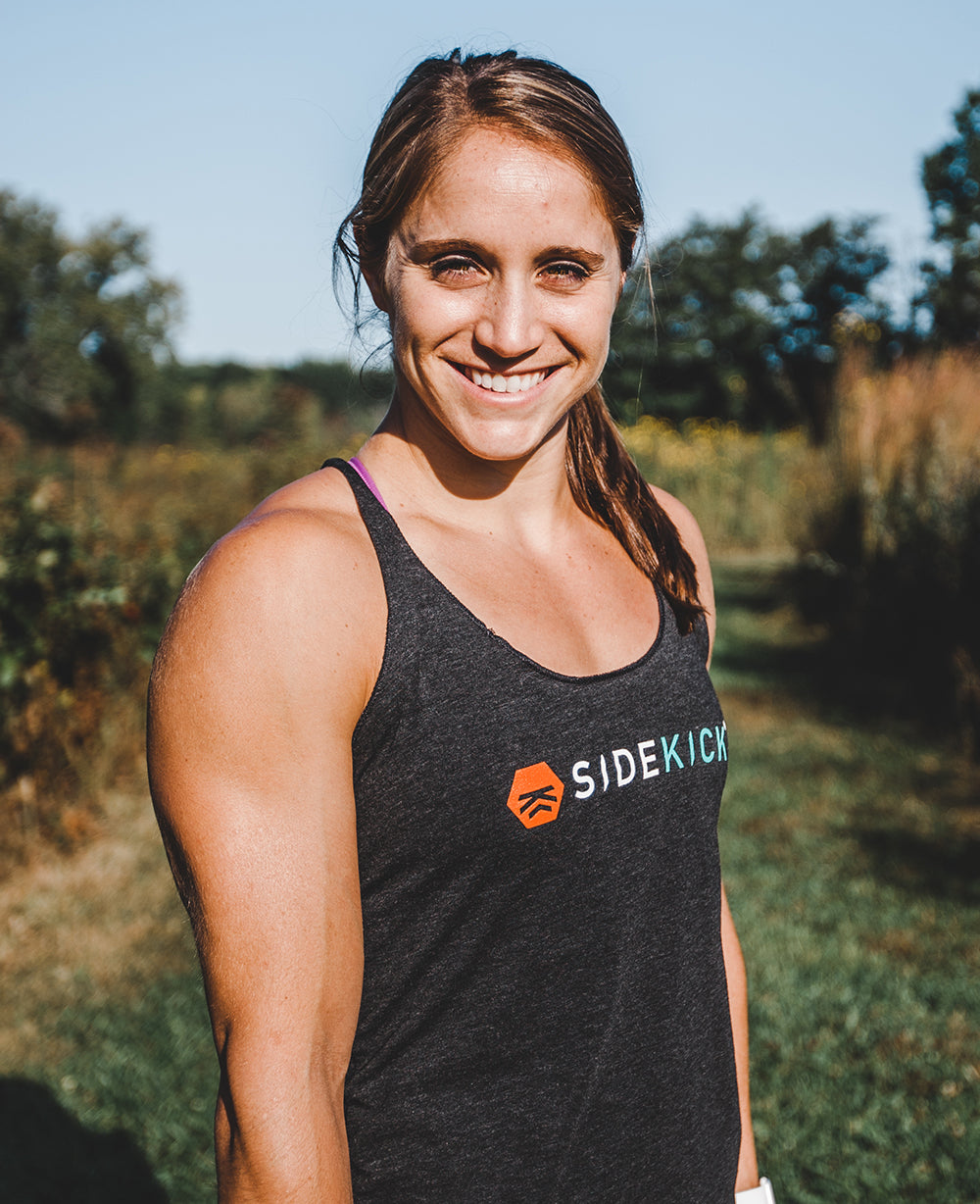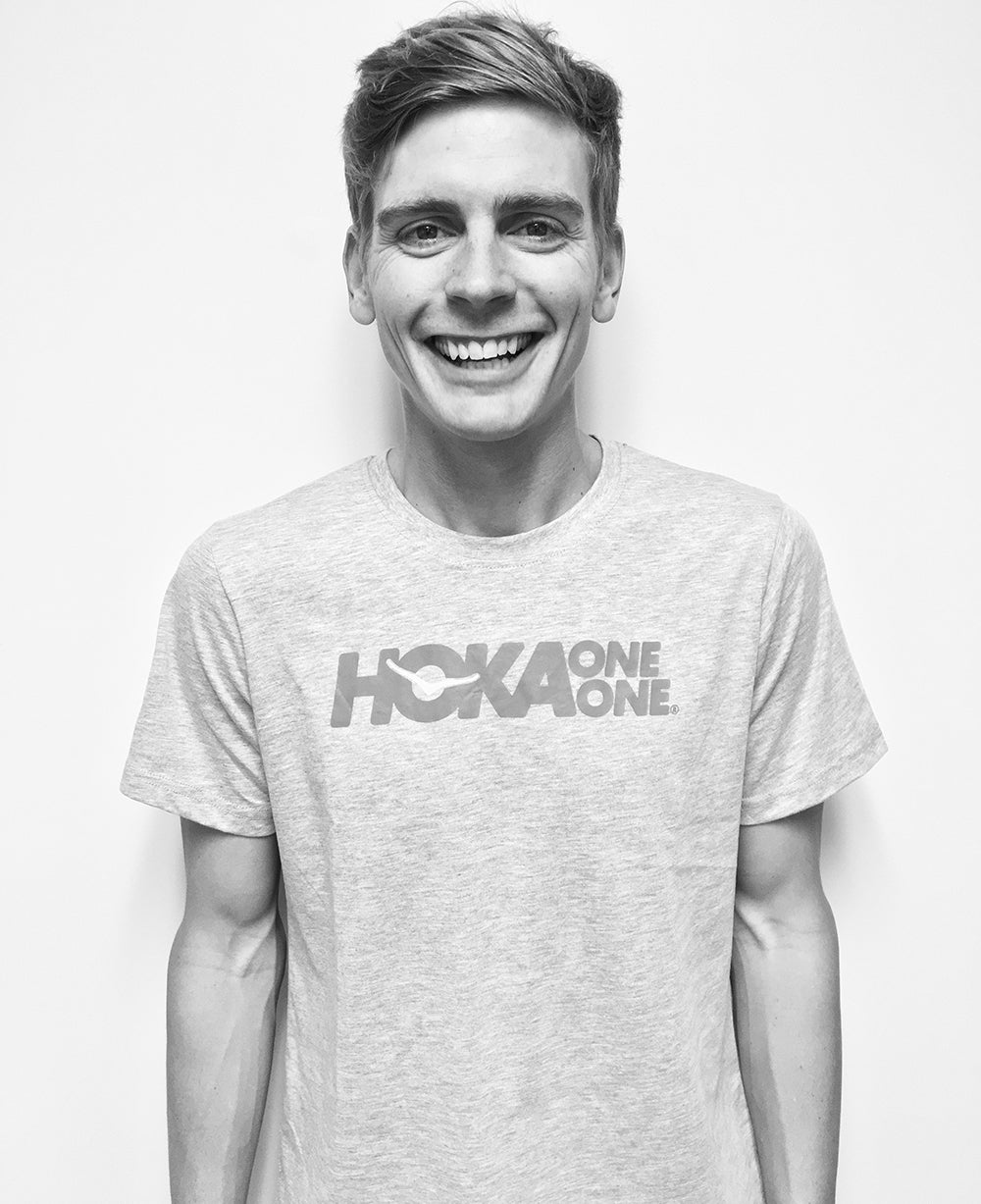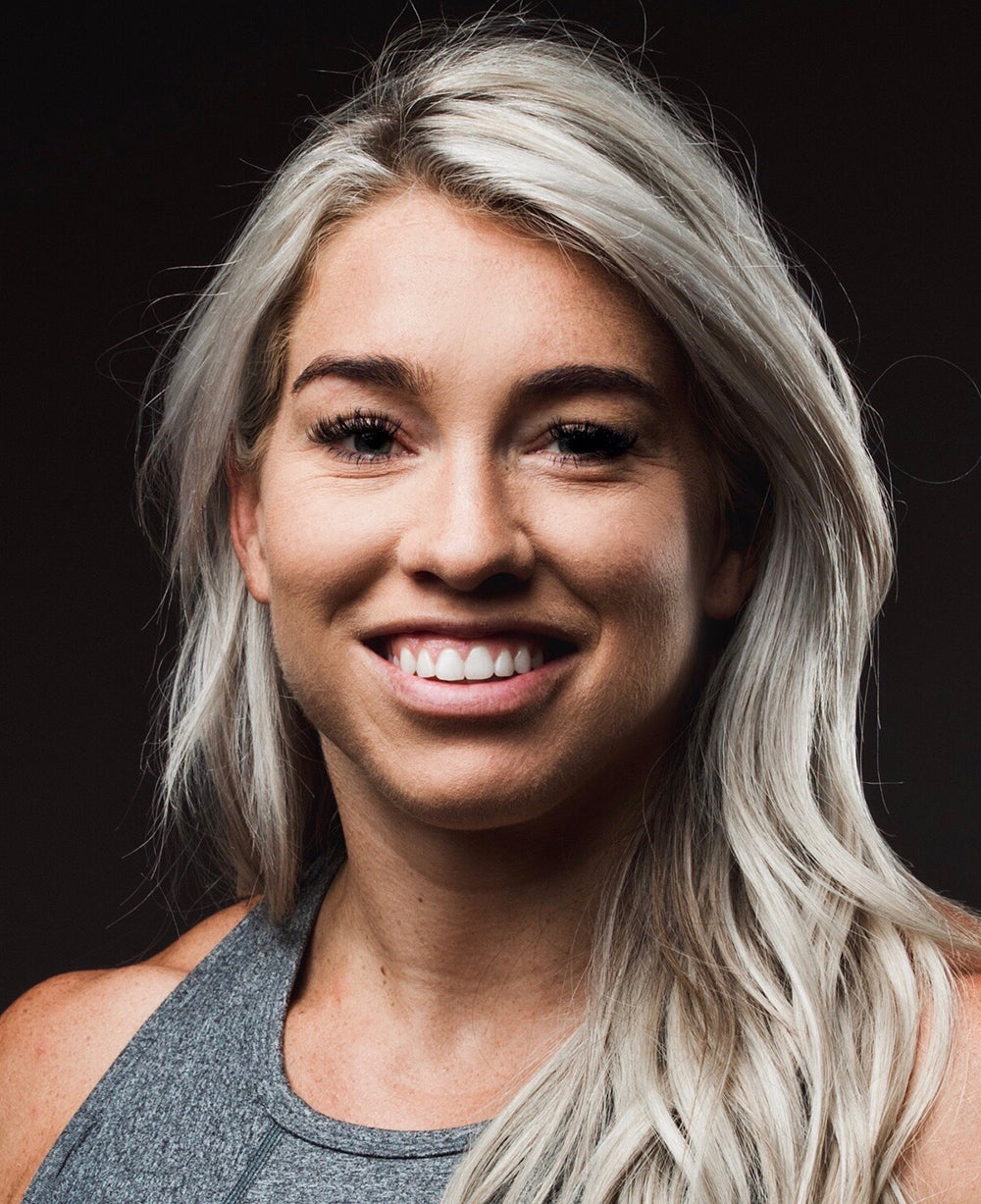

EMILY
INFELD
RUNNING
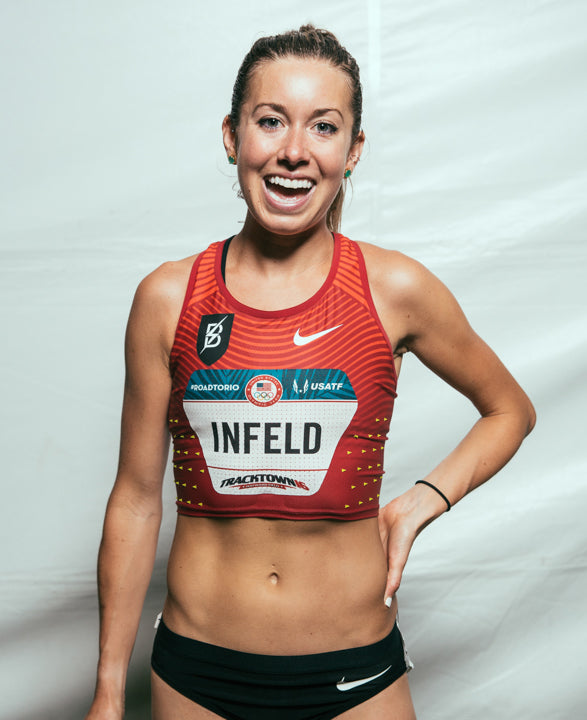
Emily Infeld runs the 5K and 10K for the Nike Boweman Track Club and placed 11th in the 2016 Rio Olympics in the 10K. She grew up in University Heights, Ohio and went to Beaumont High School where she was an 8-time Individual State Champion and still holds their high school record in the 1600m (4:41). She was the U.S. High School National Champion in the 8-mile in 2008.
Emily then attended Georgetown University where she was an 11 time All-American, Captain of the 2011 NCAAD1 Women’s XC Champions, 2012 Indoor NCAA Champion in the 3000m, and 3-time runner-up at NCAA (Cross Country, 1500m, 5000m).
She currently lives in Portland, Oregon and runs for the Nike Bowerman Track Club.
Emily competes regularly on the track, roads, and in Cross Country. She was 21st at the World XC Championships in Poland and was the Nike Club’s first outdoor track medalist, winning Bronze in the10k at the 2015 World Outdoor Track and Field Championships in Beijing.
She was an Olympic Runner in the 10K at the 2016 Olympics in Rio, where she placed 11th, and also placed 6th in the 10K at the 2017 World Outdoor Track and Field Championships in London, England. Emily has been ranked 4th and 5th in the 10K, worldwide (2015 and 2017, respectively), and #1 in the U.S. in 2017 by Track & Field News. She was also the 2018 U.S.A. Cross Country Champion.
She has battled back from numerous injuries during her professional career including multiple stress factures, while still competing at the highest level.
STATS
800M: 2:06
1500M: 4:07
1 MILE (road): 4:27
3000M: 8:41
5000M: 14:51
10,000M: 31:20
Tell us a bit about your life before being a professional runner?
I started off doing every sport you could imagine – soccer, softball, gymnastics, Irish dancing, tennis, swimming, basketball, volleyball, and I was horrible at everything. I loved being on a team, but from the sport aspect, I really only liked running. I had zero hand-eye coordination.
I fell in love with running at a young age and would go do these fun runs with my Dad over the summer. We would do everything from 1-mile runs, 2-mile runs, and sprint triathlons. It was fun for me and my Dad and something we could do together that bonded us. I really liked seeing how fast I could be – I think that’s still what drives me today is seeing how much I can push the limits of my body.
Who’s your athletic role model?
Shalane Flanigan was the biggest idol of mine, and now I get to train with her which feels full circle for me. She was a silver medalist in the 2008 Olympics and in high school and college I completely idolized her. Before I graduated college, I was approached by her coach who told me I had the opportunity to train with her on their team – which was a dream come true. That was definitely a highlight of my career.
If you weren’t a professional runner, what would you do?
I love baking and cooking! Maybe I’d go to culinary school.
What does a typical training day look like?
I normally get up between 7-7:30, have coffee, eat breakfast, drive to Nike, then do 30-45 minutes of prehab exercises, rolling, using the Bow or the Echo in pre-running to get the muscles activated. Then I do some activating exercises and go out for my run which is anywhere from 60-80 minutes in the morning. After that I do a strength routine, have lunch, go to physiotherapy, come back and have a second run or cross-train. I finish my day with dinner and hanging out, do more stretches before bed and then go to bed between 8:30 and 9:30PM.
Do you ever get a break?
After track season we get 4-6 weeks of downtime which is running every other day, then 2 weeks of building miles, and then starting training 2 weeks after that.
How important is mental health in your sport?
I think the mental side of running is huge – you have to have mental fortitude with it because you’re bound to get injured, some people more than others. It’s tough and you don’t feel good every day. When you’re running high miles and pushing the body, you’re never going to have a great day every single day. It’s in those moments you have to remind yourself why you’re doing this, what you want to get out of it and just focus on being the absolute best you can that day.
What’s one piece of advice you have for athletes?
The biggest thing for me is focusing day by day on what I can control and just keep moving forward. I create limits for myself so I’m not comparing my progress to others, especially when I’m insured.
What does recovery look like?
Prehab always starts with rolling my back, I’m always focused on thoracic mobility, and I really like the Fuse for that. After, I roll out my legs, then I’ll take the Echo and work out my foot as well as up and down my leg and focus on problem areas and any scar tissue. Then I’ll do stretches, band work, and glute activation. Some days I’ll do up to an hour of prehab before actually running to get myself super activated and ready. Post run is always similar and involves a lot of stretching, working on thoracic mobility, hip mobility, hamstrings, and rolling.
Why do you love working with Sidekick?
I love the products. I really believe in them and that they’ve already helped me a lot with my post-hip and that they allow me to manage it so I don’t have to take an extended amount of time off training. It helps alleviate inflammation build up and loosens the tendons in my legs. The tools have been so helpful in my entire recovery routine. The tools wake up my muscles, promote blood flow. Scraping helps bring more flexibility and mobility in my body.
What’s your favorite Sidekick tool?
The Echo. I love how it feels in my hand and it’s so easy to travel with. I like how I can also get to smaller areas with it like my foot but also deep into muscles like my hip while also taking care of my scars.
How important is recovery to you?
Without recovery you’ll slowly deteriorate. If you can’t let your body recover, you’re not going to be able to preform as well. Especially when you’re constantly training you have to be extremely diligent with the recovery aspect. That’s everything from sleep to fueling your body with good nutrition and of course working out the muscles and body. I probably spend 3-4 hours on recovery every day including pre-run, post-run and therapy.
“The Sidekick Echo has become my new fave prehab tool!”
EMILY'S FAVOURITE SIDEKICK TOOL
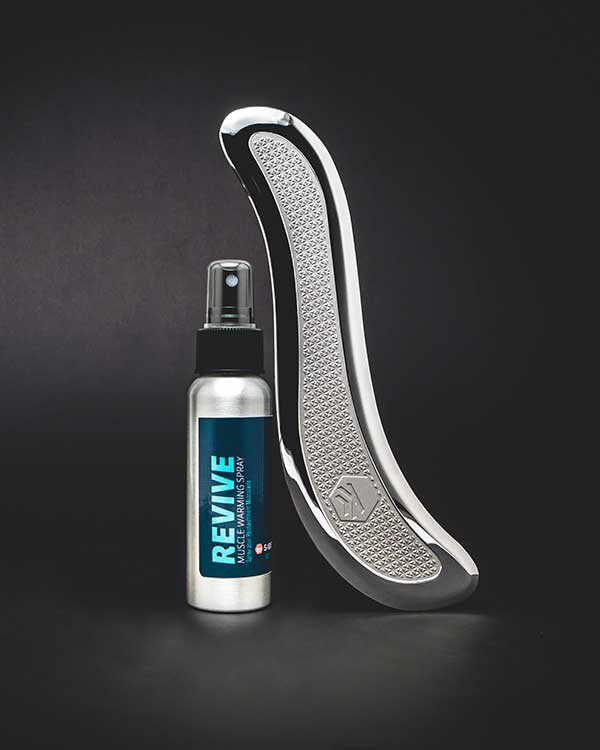
Echo Muscle Scraper
WHAT'S INSIDE THE SET
- Echo Muscle ScraperHandheld stainless steel muscle scraper.
- Revive Emollient SprayMade from 100% natural ingredients, apply this lubricant prior to scraping.
- Protector Case Your Echo is an investment, keep it protected at all times.
- Cleaning Towel This towel is great for wiping off excess oil on your skin after use.

STATS
800M: 2:06
1500M: 4:07
1 MILE (road): 4:27
3000M: 8:41
5000M: 14:51
10,000M: 31:20
EMILY
INFELD
PROFESSIONAL RUNNER
Emily Infeld runs the 5K and 10K for the Nike Boweman Track Club and placed 11th in the 2016 Rio Olympics in the 10K. She grew up in University Heights, Ohio and went to Beaumont High School where she was an 8-time Individual State Champion and still holds their high school record in the 1600m (4:41). She was the U.S. High School National Champion in the 8-mile in 2008.
Emily then attended Georgetown University where she was an 11 time All-American, Captain of the 2011 NCAAD1 Women’s XC Champions, 2012 Indoor NCAA Champion in the 3000m, and 3-time runner-up at NCAA (Cross Country, 1500m, 5000m).
She currently lives in Portland, Oregon and runs for the Nike Bowerman Track Club.
Emily competes regularly on the track, roads, and in Cross Country. She was 21st at the World XC Championships in Poland and was the Nike Club’s first outdoor track medalist, winning Bronze in the10k at the 2015 World Outdoor Track and Field Championships in Beijing.
She was an Olympic Runner in the 10K at the 2016 Olympics in Rio, where she placed 11th, and also placed 6th in the 10K at the 2017 World Outdoor Track and Field Championships in London, England. Emily has been ranked 4th and 5th in the 10K, worldwide (2015 and 2017, respectively), and #1 in the U.S. in 2017 by Track & Field News. She was also the 2018 U.S.A. Cross Country Champion.
She has battled back from numerous injuries during her professional career including multiple stress factures, while still competing at the highest level.
Tell us a bit about your life before being a professional runner?
I started off doing every sport you could imagine – soccer, softball, gymnastics, Irish dancing, tennis, swimming, basketball, volleyball, and I was horrible at everything. I loved being on a team, but from the sport aspect, I really only liked running. I had zero hand-eye coordination.
I fell in love with running at a young age and would go do these fun runs with my Dad over the summer. We would do everything from 1-mile runs, 2-mile runs, and sprint triathlons. It was fun for me and my Dad and something we could do together that bonded us. I really liked seeing how fast I could be – I think that’s still what drives me today is seeing how much I can push the limits of my body.
Who’s your athletic role model?
Shalane Flanigan was the biggest idol of mine, and now I get to train with her which feels full circle for me. She was a silver medalist in the 2008 Olympics and in high school and college I completely idolized her. Before I graduated college, I was approached by her coach who told me I had the opportunity to train with her on their team – which was a dream come true. That was definitely a highlight of my career.
If you weren’t a professional runner, what would you do?
I love baking and cooking! Maybe I’d go to culinary school.
What does a typical training day look like?
I normally get up between 7-7:30, have coffee, eat breakfast, drive to Nike, then do 30-45 minutes of prehab exercises, rolling, using the Bow or the Echo in pre-running to get the muscles activated. Then I do some activating exercises and go out for my run which is anywhere from 60-80 minutes in the morning. After that I do a strength routine, have lunch, go to physiotherapy, come back and have a second run or cross-train. I finish my day with dinner and hanging out, do more stretches before bed and then go to bed between 8:30 and 9:30PM.
Do you ever get a break?
After track season we get 4-6 weeks of downtime which is running every other day, then 2 weeks of building miles, and then starting training 2 weeks after that.
How important is mental health in your sport?
I think the mental side of running is huge – you have to have mental fortitude with it because you’re bound to get injured, some people more than others. It’s tough and you don’t feel good every day. When you’re running high miles and pushing the body, you’re never going to have a great day every single day. It’s in those moments you have to remind yourself why you’re doing this, what you want to get out of it and just focus on being the absolute best you can that day.
What’s one piece of advice you have for athletes?
The biggest thing for me is focusing day by day on what I can control and just keep moving forward. I create limits for myself so I’m not comparing my progress to others, especially when I’m insured.
What does recovery look like?
Prehab always starts with rolling my back, I’m always focused on thoracic mobility, and I really like the Fuse for that. After, I roll out my legs, then I’ll take the Echo and work out my foot as well as up and down my leg and focus on problem areas and any scar tissue. Then I’ll do stretches, band work, and glute activation. Some days I’ll do up to an hour of prehab before actually running to get myself super activated and ready. Post run is always similar and involves a lot of stretching, working on thoracic mobility, hip mobility, hamstrings, and rolling.
Why do you love working with Sidekick?
I love the products. I really believe in them and that they’ve already helped me a lot with my post-hip and that they allow me to manage it so I don’t have to take an extended amount of time off training. It helps alleviate inflammation build up and loosens the tendons in my legs. The tools have been so helpful in my entire recovery routine. The tools wake up my muscles, promote blood flow. Scraping helps bring more flexibility and mobility in my body.
What’s your favorite Sidekick tool?
The Echo. I love how it feels in my hand and it’s so easy to travel with. I like how I can also get to smaller areas with it like my foot but also deep into muscles like my hip while also taking care of my scars.
How important is recovery to you?
Without recovery you’ll slowly deteriorate. If you can’t let your body recover, you’re not going to be able to preform as well. Especially when you’re constantly training you have to be extremely diligent with the recovery aspect. That’s everything from sleep to fueling your body with good nutrition and of course working out the muscles and body. I probably spend 3-4 hours on recovery every day including pre-run, post-run and therapy.
“The Sidekick Echo has become my new fave prehab tool!”
EMILY'S FAVORITE SIDEKICK TOOL

Echo Muscle Scraper
WHAT'S INSIDE THE SET
- Echo Muscle ScraperHandheld stainless steel muscle scraper.
- Revive Emollient SprayMade from 100% natural ingredients, apply this lubricant prior to scraping.
- Protector Case Your Echo is an investment, keep it protected at all times.
- Cleaning Towel This towel is great for wiping off excess oil on your skin after use.










